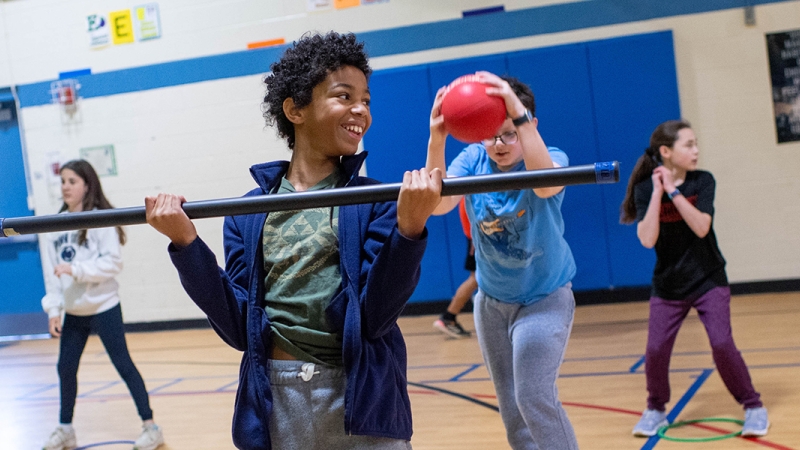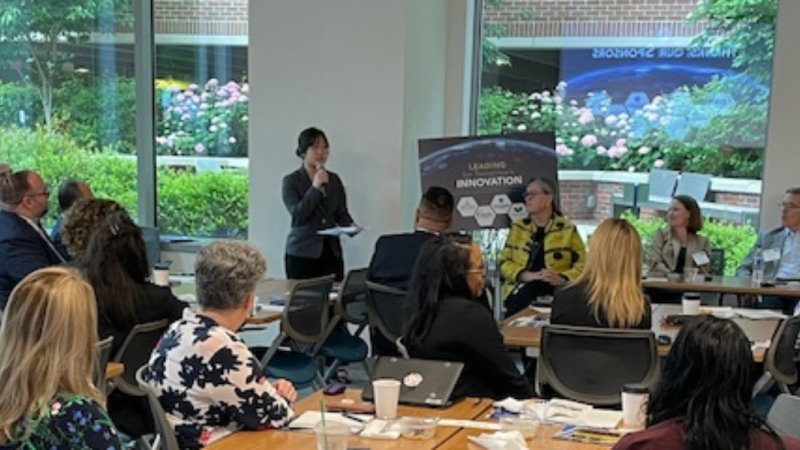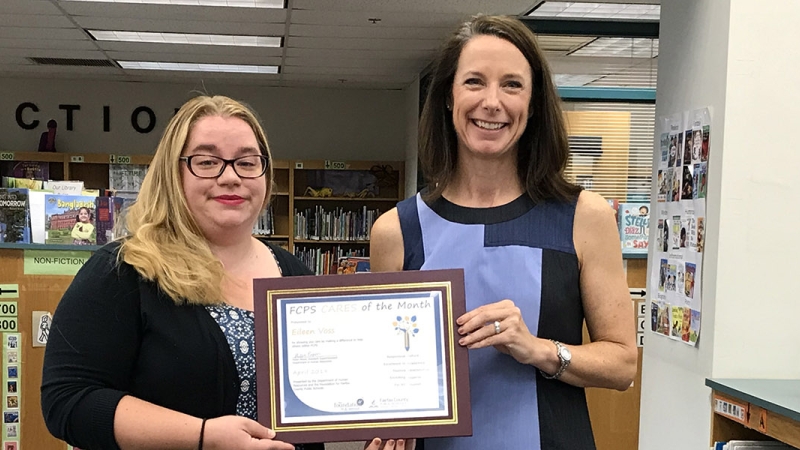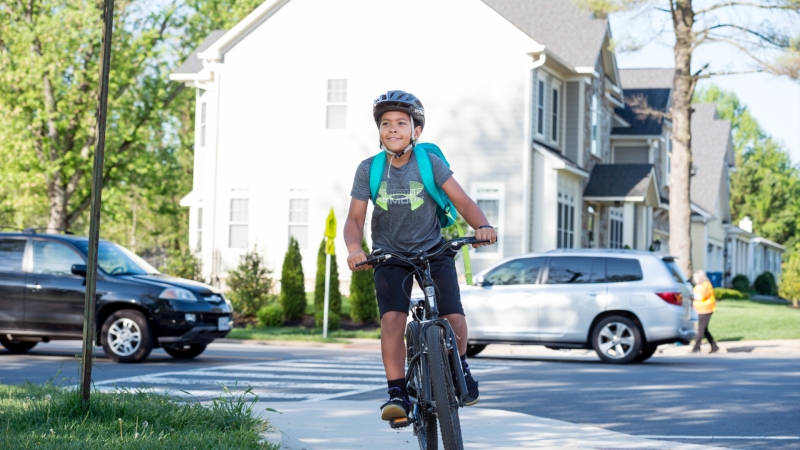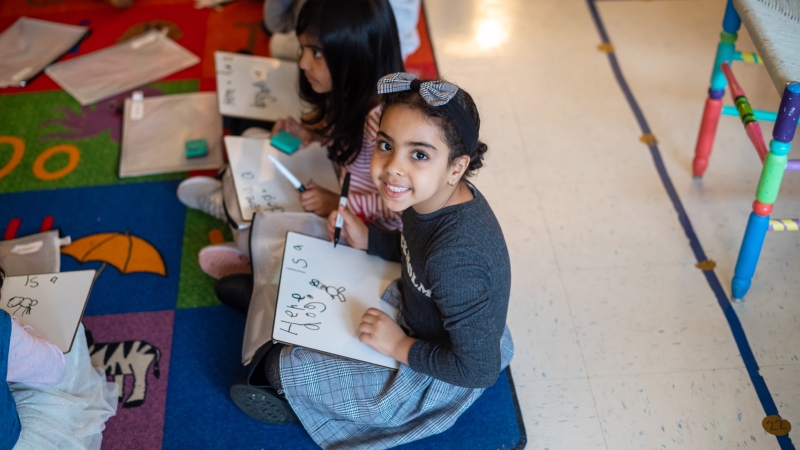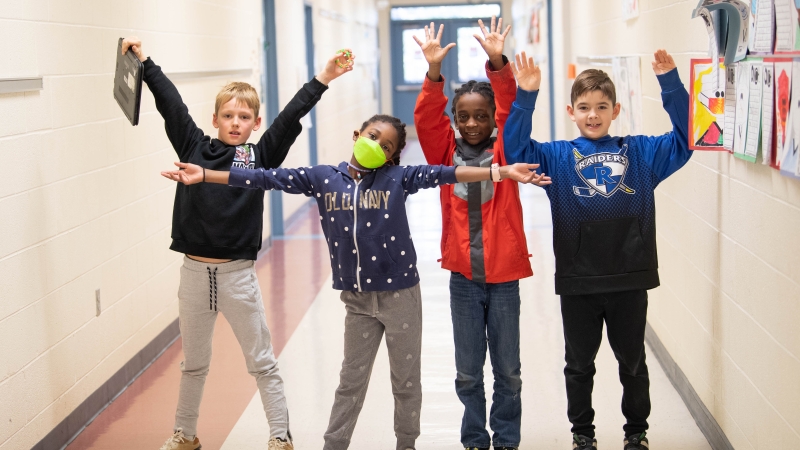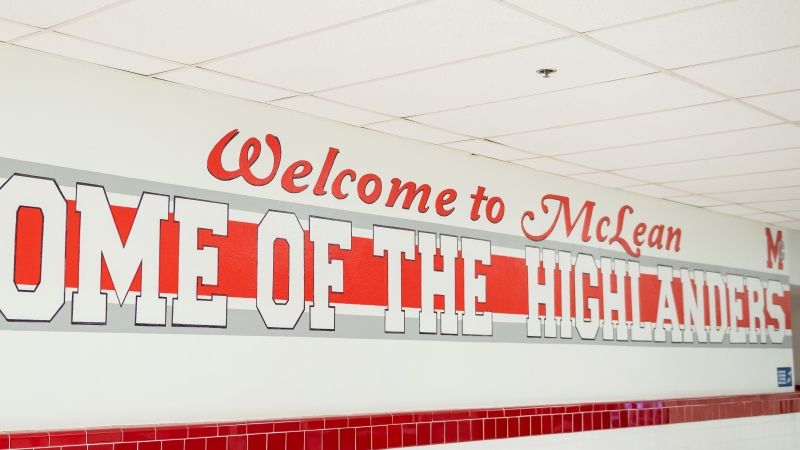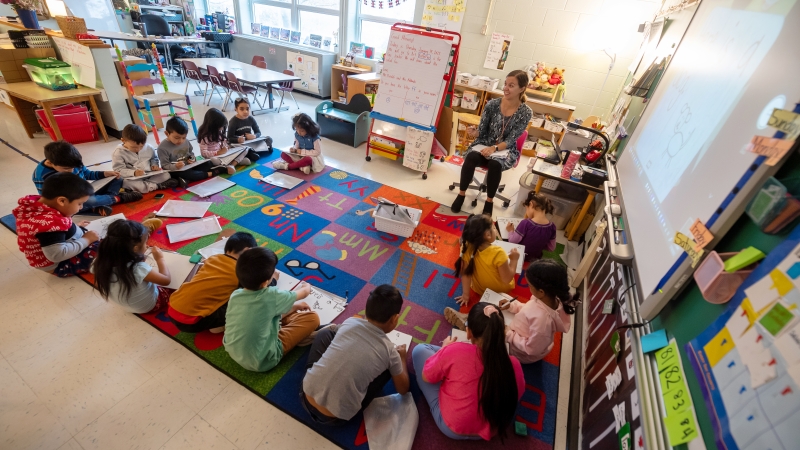
Going Places: Students at 33 FCPS Schools Learn to Safely Bike in Physical Education Unit
“Squad Five! Come to the `Chair of Helmet Help’….Spice will provide for your helmet health!,” Poe Middle School physical education teacher Tim Spicer, also known as “TSpice,” says to his sixth-grade students undertaking a biking safety unit.
“Other way, turn it around… that’s right,” Spicer tells the roughly thirty students, all of whom are sporting hair nets underneath their school-issued bike helmets. “Remember when checking your helmets, the two finger rule: There should be two fingers from the eyebrow to the top of the helmet, and two fingers should fit under the helmet.”
Mark Spicer, Tim’s fellow Poe MS physical education teacher and younger brother by six years, known by the students as MSpice, says the duo have taught roughly fifteen students this year how to ride bikes on their own, walking them through the “entire process.”
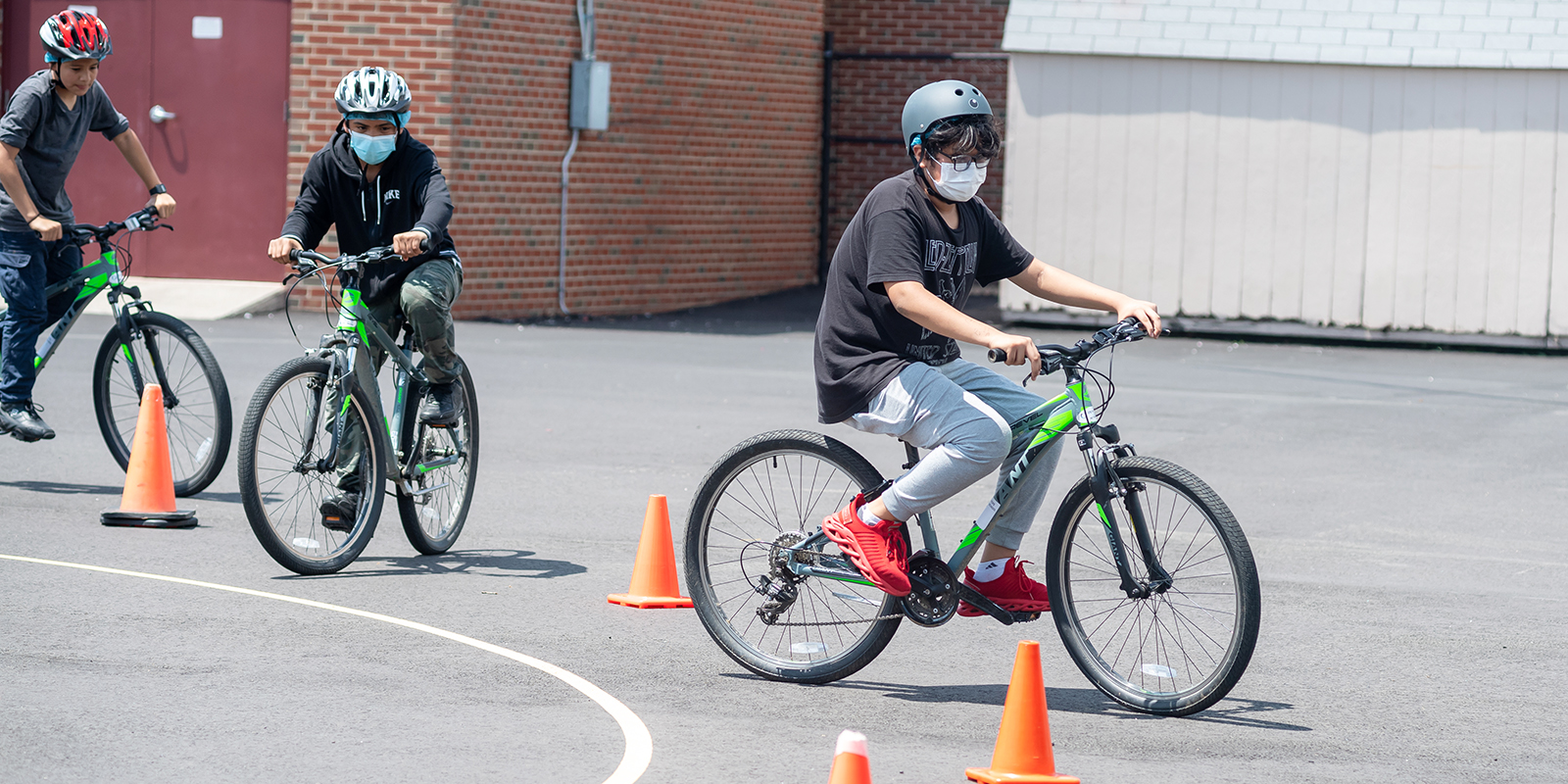
All sixth-graders at Poe MS in Annandale participate in the bike safety program through their physical education class, with more experienced riders focusing on topics like hand signals for turns, safety rules and the meanings of various road signs.
“Inclusion is a big part of why we do this,” Mark Spicer says. “A lot of these kids have friends riding bikes, it is a very normal thing for kids this age to go out and ride around, go to the park, hang out with their friends. It is not a fun feeling when one kid can’t go and ride with them.”
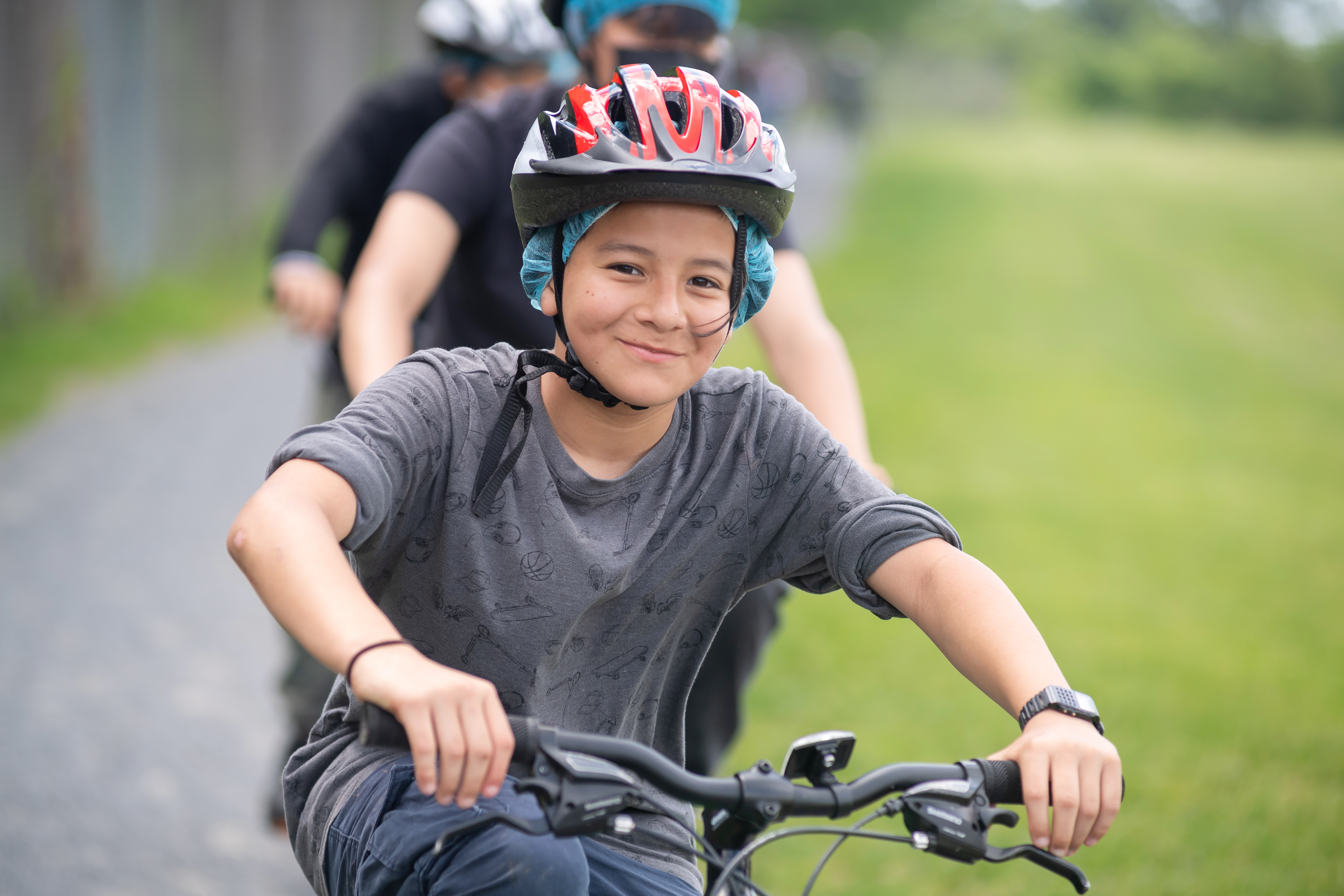
The bikes are provided by Fairfax County Public Schools, funded by a Safe Routes to School grant. Thirty-three schools participate in the program, including both elementary schools – which typically have 30 bikes and 40 helmets on hand at a given time and middle schools, which usually receive 40 bikes and 50 helmets each.
Sally Smallwood, the Safe Routes to School program coordinator for FCPS, says she developed bike safety lessons for the program based on the League of American Cyclist safety training.
“Once they have mastered the safety skills they try them out in simulated road conditions where there is an intersection and bikers traveling around a loop,” Smallwood says. “Many of our students have lost the independence that comes with riding a bike through your neighborhood. Students are driven to so many places they don't know how to navigate from point A to point B.”
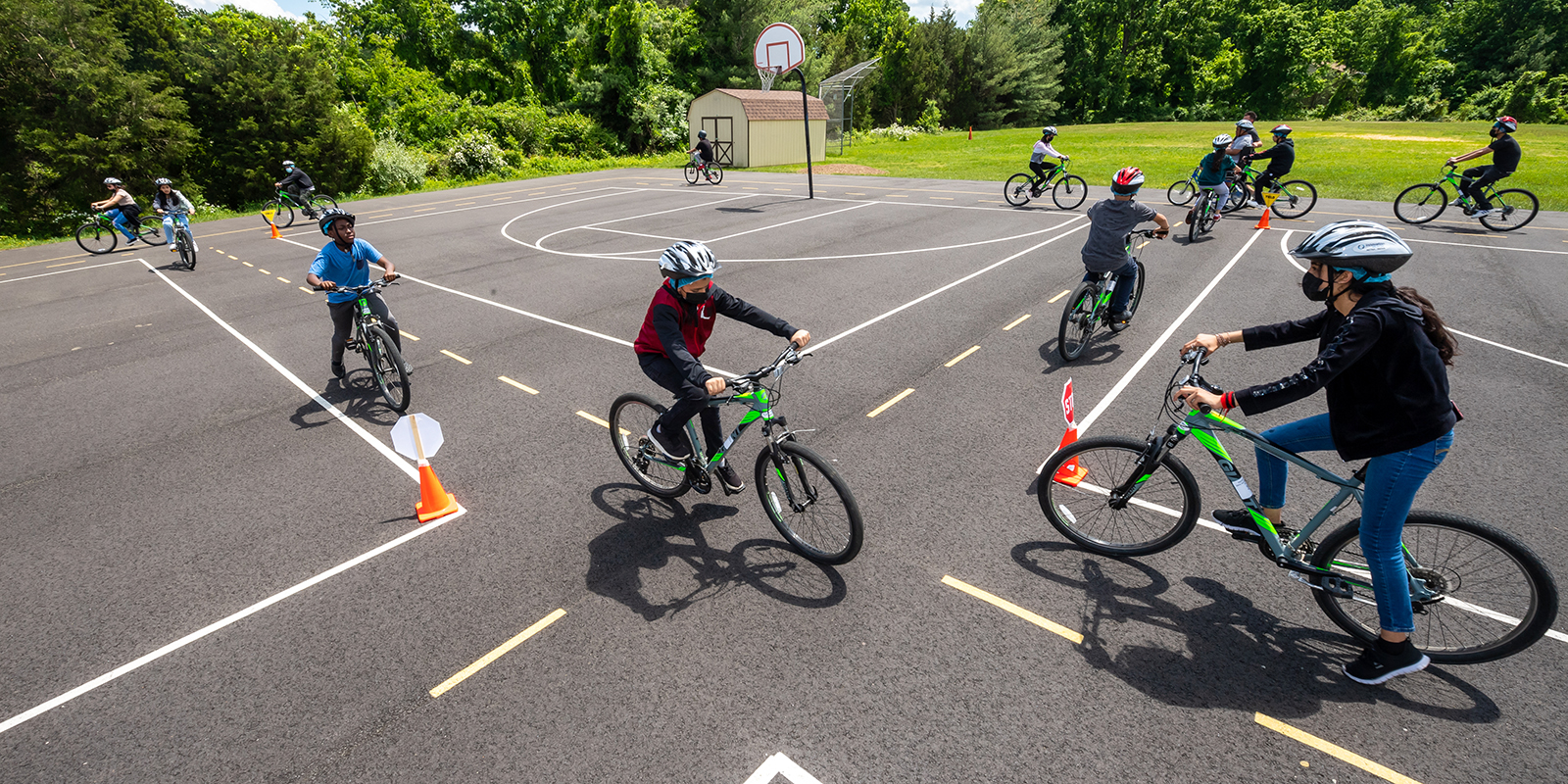
Smallwood estimates 10% to 20% of FCPS students in grades three to eight do not know how to ride a bike.
Jeremiah Halcomb-Clayborne, 12, is one of the Poe MS students that has learned to ride entirely from the Spicer brothers’ classes.
“At first I was scared that I would hurt myself going down hills, with the balancing you know,?” Jeremiah says. “But then I learned how to balance. All you have to do is keep still, keep the force in the middle of your body, if you put the force on one side you will tip that way.”
Matthew Melean, another Poe sixth-grader, says the course was a good refresher for him.
“I knew how to ride before COVID, but kinda forgot a little. I was nervous, it looks easy but there’s a lot to remember,” Matthew said. “My mom is really proud of me. My goal, from the beginning of this unit, was to ride around the track and I just did that.”
Angelica Williams, another sixth-grader in the class, says she was a “pretty good biker” before the program started.
“I had a bike of my own, I would go out, go down hills, very big hills,” Angelica says. Even so, Angelica says she has picked up some pointers from the program, including the importance of slowing down before making a turn, but not slowing too much, in order to avoid a fall.
Teaching the course is no small feat. Beyond taking thirty students of varying biking skill levels outside, the instructors set up a complicated road course, complete with stop signs, yield signs, bumpy objects to ride over and cones to zigzag around as riders practice their skills and the difference between a hand signal for a right turn and a left turn.
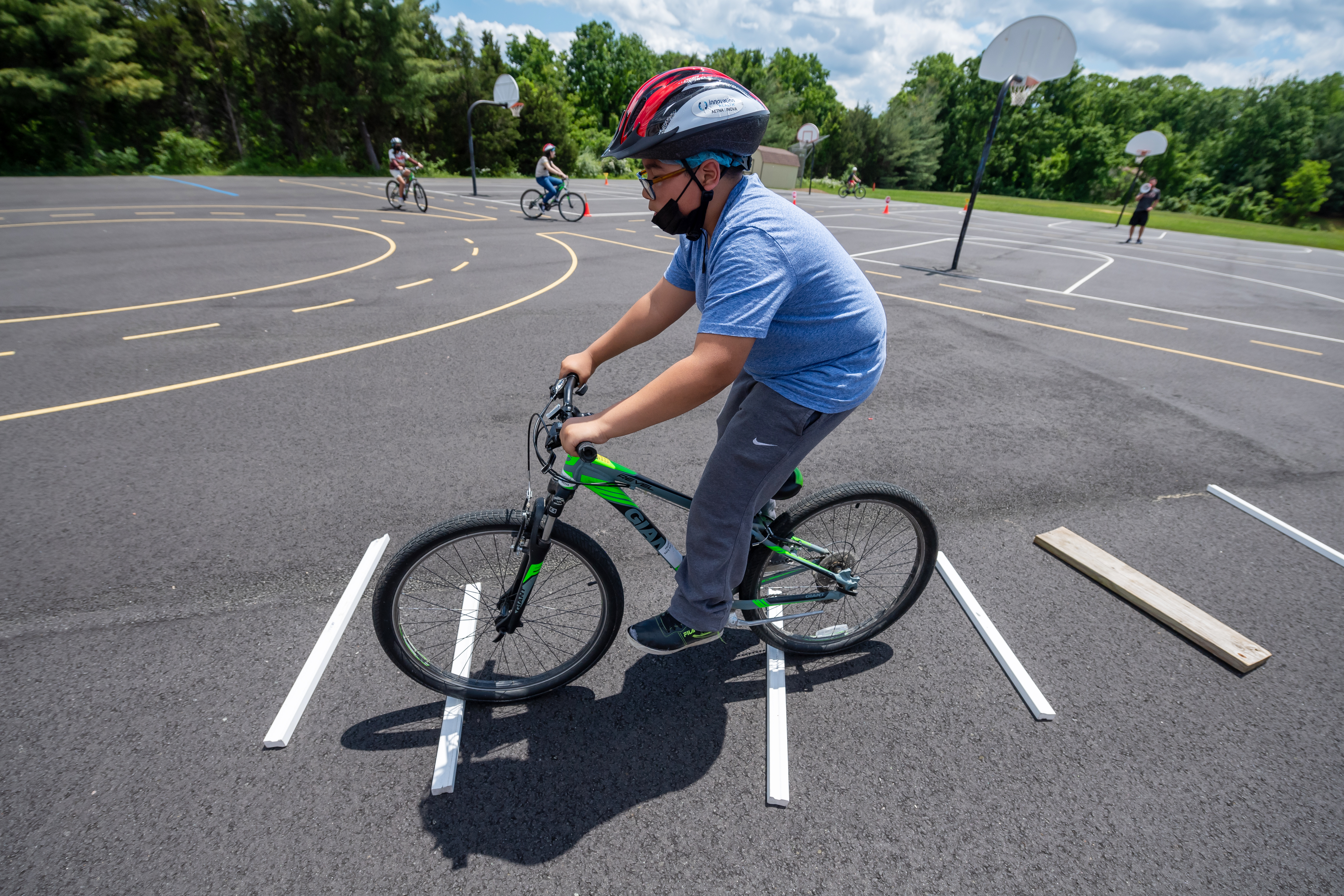
“A Yield Sign is a “Stop and see what’s up sign,” Tim Spicer reminds his students..
That’s one of several lessons even the more experienced riders like Matthew and Angelica say was helpful to them.
“In life, if you don’t have a car and you need to do something, with a bike you can go places, so it is important to know how to use it while being careful,” Angelica says.
